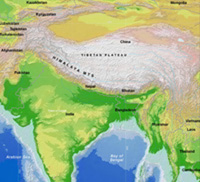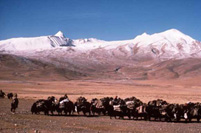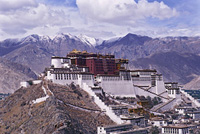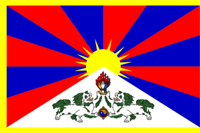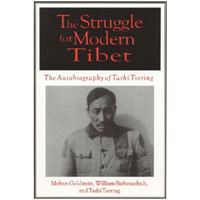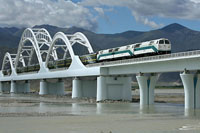
Jochen Welsch
Wachusett Regional High School
Tibet in the AP World History Framework
Recurring themes for this period of world history include decolonization, the growth of nationalism in the non-western world, hot and cold global conflicts, cooperation and globalization. Tibet's struggle to modernize and find its place in a world has been complicated by its location as well as the interests of foreign powers. As such it is well suited for discussions related to the Cold War, the growing importance of China and India as both regional and global players, as well as the role of the United Nations, human rights and globalization. Click on the title Tibet since 1919 to review Tibet's history in the twentieth and early twenty-first century.
Resources for further research and classroom extension activities:
 Melvyn Goldstein's The Snow Lion and the Dragon gives an excellent overview of the Sino-Tibetan relationship from the Mongol era to the present. I recommend it to any teacher or student looking to understand today's highly charged and politicized debate about the Tibet question.
Melvyn Goldstein's The Snow Lion and the Dragon gives an excellent overview of the Sino-Tibetan relationship from the Mongol era to the present. I recommend it to any teacher or student looking to understand today's highly charged and politicized debate about the Tibet question.
 Tashi Tsering's life parallels Tibet's struggle in the Twentieth century. This autobiography recounts his experiences growing up in pre-modern society. His enraging story gives an honest portrayal of Tibet that should help anyone dispel themselves of the notion as Tibet as a Shag ri-la. of Chosen to become a dancer in the service of Dalai-Lama, young Tashi comes to recognize that his nation must modernize if his nation is to have a productive future. Through luck and pluck, Tashi receives an education and finds himself in the USA at the time of China's "invasion/liberation" of Tibet. While not a communist, his idealism causes his return to Tibet hoping to shape his country's future from within. Imprisoned during China's cultural revolution, he nearly loses hope for himself and his people. Reforms initiated by Deng Xioping finally allow him to begin building schools to initiate development.
Tashi Tsering's life parallels Tibet's struggle in the Twentieth century. This autobiography recounts his experiences growing up in pre-modern society. His enraging story gives an honest portrayal of Tibet that should help anyone dispel themselves of the notion as Tibet as a Shag ri-la. of Chosen to become a dancer in the service of Dalai-Lama, young Tashi comes to recognize that his nation must modernize if his nation is to have a productive future. Through luck and pluck, Tashi receives an education and finds himself in the USA at the time of China's "invasion/liberation" of Tibet. While not a communist, his idealism causes his return to Tibet hoping to shape his country's future from within. Imprisoned during China's cultural revolution, he nearly loses hope for himself and his people. Reforms initiated by Deng Xioping finally allow him to begin building schools to initiate development.
Click here for an excerpt to this book (from the PBS series Frontline) that you can use in the classroom. The questions that precede the excerpt can serve as writing prompts for student position papers or you can you can debate whether Tashi made the "right" decision.
 Click on the image to read an excerpt from a recent National Geographic article on Tibet. How does the information presented here support or detract from what students debated about Tashi Tsering's excerpt.
Click on the image to read an excerpt from a recent National Geographic article on Tibet. How does the information presented here support or detract from what students debated about Tashi Tsering's excerpt.
Click here for the article Tibet Through Chinese Eyes by Peter Hessler (Atlantic Monthly, 1999.) Combine with the previous excerpts to provide students with multiple perspectives on the issue of Tibetan independence. Together these three could provide the basis for a position paper or a structured class debate.
 This site was created by Jochen Welsch at the NEH Summer Institute "Literatures, Religions, and Arts of the Himalayan Region," held at the College of the Holy Cross, Summer 2008.
This site was created by Jochen Welsch at the NEH Summer Institute "Literatures, Religions, and Arts of the Himalayan Region," held at the College of the Holy Cross, Summer 2008.